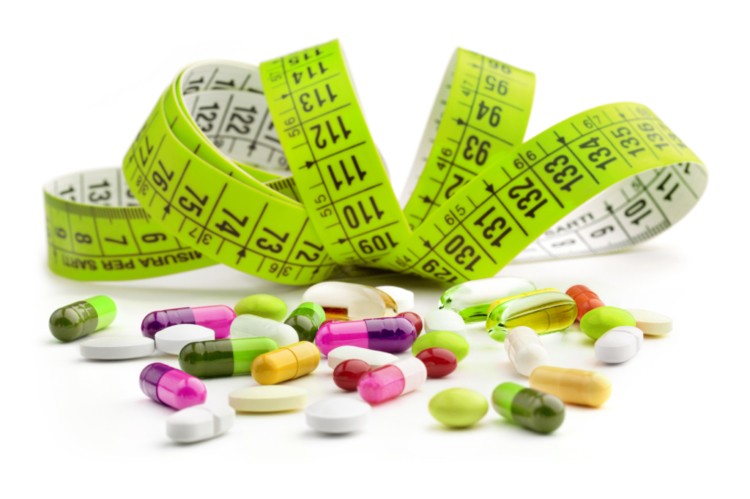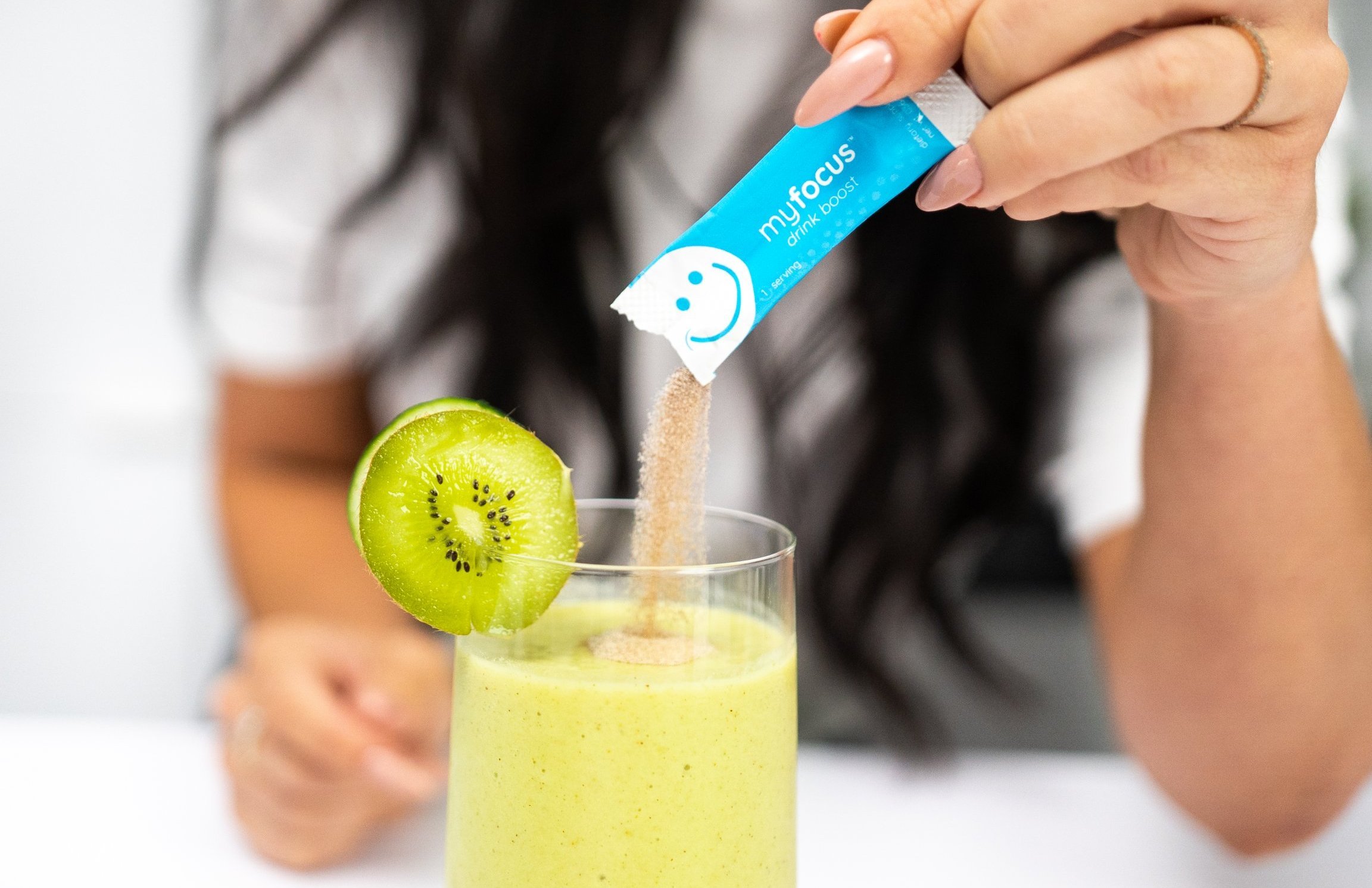HEALTH & WELLNESS
5 Skincare Regimens Perfect for Spring and Summer
Published
2 months agoon
By
fitinstyle
Spring is in the air! The trees are changing colours, flowers are blooming, and you will notice that your skin feels different too. The sun is getting harsher, and heat and humidity will make their way towards hampering the skin… Well, if you don’t care. If you fail to switch from your heavy winter skincare routine to a light spring one, you could soon be facing the issues of acne, breakouts and dull skin.
This is the perfect time to amp up your skincare and go in for dermatological treatments like chemical peels and laser skin resurfacing. You can also help your skin be spring and summer-ready by using the right skincare ingredients. An intelligent combination of active ingredients can do wonders for the skin and even keep the signs of ageing away. To make the most of the spring weather learn to make the most of your skincare routine.

Best skincare combinations that will work for your skin
The important thing to remember is to pair your skincare ingredients correctly together. Very few are power couples for the skin that might work and benefits your skin. The first trick, of course, is to not use all the products together. To maximise the benefits of the skincare ingredients, here are some important parings you should not miss:
1. Vitamin C with SPF
Vitamin C is an essential ingredient for skin care. It helps protect the skin from sun damage, fights the antioxidants, repairs the skin barrier, promotes collagen production, and acts as an anti-ageing ingredient. When combined with sunscreen, the two work to protect your skin from environmental damage and block the UV rays that filter through the sunscreen.
Also Read: Vitamin C for skin: 7 benefits you must know about
2. Niacinamide with salicylic acid
Niacinamide is an important ingredient for fortifying the skin barrier and treating hyperpigmentation. Salicylic acid is what your skin needs to keep the breakouts away. When they are used together, your skin will benefit from reduced pore size, prevent acne breakouts, improve skin strength and work against the signs of ageing. Together they also improve collagen and elastin fibres giving the skin a youthful glow from the inside.

3. Retinols with peptides
Move the retinol to your nighttime routine during this time of the year. Vitamin A derivatives are the gold standard for home skin care because they treat everything from acne to ageing to fine lines. Peptides help skin cells rejuvenate and repair. Together they correct your complexion, make the skin tighter and give a smoother and plumper look to the skin.
4. Vitamin C and vitamin E
Vitamin C is essential for skin rejuvenation and protection, and vitamin E helps keep the skin supple. You can use them together to protect the skin from oxidative stress and maintain the suppleness of the skin, leaving you to enjoy the weather in its full glory.
5. Hyaluronic acid with exfoliating acids
Spring is a good time for skin repair, and the AHAs and BHAs do a great job of removing the top layer of the skin, making the new skin sensitive to dryness, and hyaluronic acid is a humectant that restores dryness. Hyaluronic acid recharges skin hydration and has long-lasting benefits for the skin.

Things to remember
When using new skin combinations, make sure you take your skin type into account. Always do a patch test first and start when using these combinations 1-2 times a week along with your regular skincare routine and slowly increase the frequency as needed by the skin. Do not over-exfoliate or scrub the skin, focus on good skin care every day for great results instead.


The sports supplements industry is one of the largest industries in the world of sports, especially with respect to revenue. Athletes are often attracted to these supplements by the effective marketing approaches used by marketers to sell these products. In sports, every athlete seeks to stage the best performances to achieve different milestones through their sporting life. The availability of supplements that can enhance the performance of these athletes makes them seductively attractive for these individuals. No one would miss an opportunity to improve their performance, irrespective of the risks that exist. However, there is a need to ensure that these supplements are regulated. The lack of regulations in the sports supplement industry could lead to increased risks for the athletes. Perhaps we need to have a more standard approach to the management of sports supplements.
By Gabriel I. Escalera
First, it’s essential to first have a better understanding of what sports supplements are in the sporting industry. Sports supplements are additional nutrients that individuals can add to their normal diets to improve their physical abilities to perform in physical activities. Active athletes often include supplements in their diets to achieve sufficient nutrition for optimal performance in sports. In addition, athletes also use supplements to compensate for nutritional deficiencies. Most importantly, there is a belief among athletes that supplements significantly improve their abilities, helping them achieve higher performance.
Supplements play an important role in the diets of athletes. As the name suggests, these substances should be used in addition to the normal diet, as opposed to being replacements. There are supplements that have been developed based on scientific evidence. This means that there are supplements in the market that can be beneficial to the athletes who consume them. There are several benefits that athletes can draw from using these supplements. One of the most significant benefits is that they can legally improve the performance of athletes. Other than that, supplements can also be used to attain the required weight for a specific sport’s weight classes. Similarly, they can be effective in losing weight for a specific sport. Supplements can also be used by athletes to build muscles and improve the circulation of oxygen within the body. Moreover, supplements also provide athletes with an option that helps them avoid the temptations of using other performance-enhancing drugs that are banned in most competitive sporting activities. As such, supplements are critical for athletes, especially with respect to the possibility of enhancing performances.
There is a significant difference between performance-enhancing drugs and dietary supplements. There is a complete ban on performance enhancing drugs in the sporting world. However, dietary supplements are allowed within the sporting world. In the United States, the Food and Drug Administration (FDA) does not place strict regulations on sports supplements. So, the manufacturers of these substances are not required to submit samples of their products to the FDA. The only requirement for sport supplement manufacturers is to make a claim of the health benefits of the supplement, based on scientific evidence. However, the FDA does not go beyond that to scientifically verify these claims. Because of this there may be inadequate regulation of sports supplements, and this places the athlete at the risk of consuming substances that may be harmful to them.
The use of supplements has continued to be a controversial topic among the stakeholders in the supplement industry. These controversies tend to keep the conversation going and ensure that we can develop policies and laws that regulate the production and use of sports supplements. There are concerns about the processes involved in the manufacture of some sports supplements. The manufacturing process plays a significant role in determining the final product. The manufacturing process involves the use of different ingredients and processes that are not entirely known or understood.
Another important area of concern over sports supplements is that of the quality of these supplements. The quality of the supplement is critical however, the FDA does not require any quality standards on supplements. The FDA only requires that the manufacturers make a claim about the health benefits of these supplements. The FDA does not require the manufacturer to provide clinical or scientific trial results that verify the claims. This means that the manufacturers have considerable leeway to provide inaccurate information about the supplements to get approval from the FDA. It is also possible that the manufacturers could create the same substance, give it a different name, and different claims to ensure that they are seen as different supplements.
Based on these observations, there appears to be a need to develop programs, policies, and laws that effectively regulate the production and sale of sports supplements. There is a need for the stakeholders, especially the FDA, to change the approach to the management of the supplements in the market. Regulations should be developed to streamline the manufacturing process. Just like in the manufacture of medicines, there seems to be a need to regulate the manufacture of sports supplements. These supplements, when ingested, have the capacity to alter the body’s function. Their effects are similar to medicines. The regulation of the manufacturing process would ensure that there is a standard quality for every type of supplement. It could ensure that the most appropriate ingredients and processes are used in their manufacture.
Quality control measures should also be implemented to ensure that the supplements are not harmful. The quality of the supplements is dependent on scientific validation of their effectiveness in achieving the objectives for which they are created. As such, the FDA should implement programs that would compel the manufacturers to provide scientific verification for the health claims made. This would mean that quality is central to the development and production of the sports supplements. As such, it could provide a regulatory framework established to eliminate the safety risks associated with sports supplements. This way, sports supplements will be able to achieve their fundamental objectives without creating any controversy.
References
Kapoor, A., & Sharfstein, J. M. (2016). Breaking the gridlock: Regulation of dietary supplements in the United States. Drug testing and analysis, 8(3-4), 424-430. Maughan, R. J., Burke, L. M., Dvorak, J., Larson-Meyer, D. E., Peeling, P., Phillips, S. M., … & Meeusen, R. (2018). IOC consensus statement: dietary supplements and the high-performance athlete. International journal of sport nutrition and exercise metabolism, 28(2), 104-125.

When it comes to achieving a desirable body, it is common for people to have problem areas such as love handles, flabby arms, sagging skin, or hips. The market is flooded with products that claim to eliminate fat or tone specific body parts, from creams and applications to gadgets and machines. However, the reality is that you cannot spot reduce, and the attempt to do so is not only futile but also potentially harmful.
There are several reasons why spot reduction is a myth. Firstly, a healthy diet is crucial in eliminating body fat, and consuming high-calorie and high-cholesterol foods can cause the accumulation of fat in problem areas. No matter how many gadgets you use, if you continue to indulge in unhealthy foods, you will not see results.
Secondly, spot reduction is a simplistic approach that overlooks the complexity of the body. Many products claim to require nothing but attaching or applying them to problem areas, neglecting other body parts and requirements. To achieve a healthy body, you need to understand the physiology of your body and what it takes to achieve your goals. For example, if you want six-pack abs, you need to focus not only on abdominal exercises but also on reducing body fat and increasing body mass through a healthy diet and cardio exercises.
Thirdly, there are no shortcuts to achieving a healthy body. Miracle diets, pills, and potions may seem like a quick fix, but they will ultimately lead to a dead end. To achieve a healthy body, you need to put in the work and earn it.
Finally, committing to the health of your body is a lifelong dedication. Even if you achieve a desirable body now, it will not remain so forever if you abuse your diet and lifestyle. Therefore, it is essential to develop a holistic approach to your health and fitness, incorporating not only exercise and diet but also a positive outlook on life.
In conclusion, the key to achieving a desirable body is to do it the proper way. There are no shortcuts or quick fixes, and spot reduction is a myth. Instead, focus on developing a healthy diet and exercise program that addresses the whole body, and commit to a lifelong dedication to your health and well-being. By taking matters into your own hands, you can enjoy the benefits of a healthy body and a positive outlook on life.
HEALTH & WELLNESS
8 Tips to Making a Better Healthy Smoothie
Building a healthy smoothie can seem daunting, particularly when you realize just how many recipes out there are laden with added sugars, sweeteners, and extra calories. While delicious, these added sugars turn a healthy snack or meal replacement into a dessert recipe. At this point, you may as well eat a piece of candy.
Published
2 years agoon
June 14, 2022By
fitinstyle
Building a healthy smoothie can seem daunting, particularly when you realize just how many recipes out there are laden with added sugars, sweeteners, and extra calories. While delicious, these added sugars turn a healthy snack or meal replacement into a dessert recipe. At this point, you may as well eat a piece of candy.
But no more! Today, we take control of the kitchen and learn how to make your own unique brand of smoothies.
Mark Your Macros
The first (and easiest) step when preparing your smoothie is to approach it with a macro-focus. Healthy smoothies tend to tackle three main macros: proteins, healthy fats, and healthy carbs. For more about dietary macros and what they mean for you, click here. Ideally, you want to strive for a higher protein smoothie and lower in either carbohydrates or fats, depending on your goals, dietary choices, and personal preferences.
Pump the Protein
There is a popular misconception that only bodybuilders and gym rats need additional protein in their diet. Everyone needs to get around 52 g of protein a day, depending on body weight (this is about 0.8 – 1.0 grams of protein per kilogram of body weight. An athlete may need more than this). Luckily, there are a variety of choices for healthy protein.
Even if you’re not a fan of whey protein powders, you still have options. Greek yogurt and cottage cheese are both excellent protein sources for minimal calorie cost (Not to mention they put the smooth in smoothie). If you’re looking for a protein that does a little more for you, there are also organic plant protein powders like mycore that include servings of fruit, veggies, and immune-boosting antioxidants.
Build the Base
Most people start their smoothies with fruit juice as the liquid base. While tasty, juice contains large amounts of sugar with none of the fiber found in whole fruit. Luckily for us, there are various lower-calorie and lower sugar options from which to base our smoothie.
For more typical bases, we have water, ice, and low-fat milk. All of these are low-calorie vehicles that are safe and dependable in almost any healthy smoothie recipe. There are also liquid bases like unsweetened soy/almond/coconut milk, greek yogurt, coconut water, or even kefir for the more adventurous types out there. All of these carry additional benefits that help squeeze out value from every part of your smoothie.
Find the Right Fruit
Like using a juice base, we want to avoid high sugar fruits to limit our daily intake. Where fruits such as mangos, pineapple, and cherries might be tasty, they all clock in at over 15 g of sugar per cup.
Where my heart breaks particularly hard over mango, it’s not the end of the world. There are still plenty of healthy, low-sugar fruits such as strawberries, blueberries, and blackberries that pack a tasty punch.
(Secret tip: Use frozen fruit for thicker consistency smoothies)
Get the Right Fats
Fats have a negative connotation, but your body benefits from having the right kinds in the right amounts. Avocados are a good source of healthy fat as well as adding creamy consistency to the smoothie. Chia seeds and flax seeds are other options, both toting omega-3 fatty acids that can benefit the body as a whole.
Go Green
If your kids are anything like my kids, getting them to eat any green veggies is nothing short of an ordeal (frankly, it’s no treat for me either). Luckily, we all are a bit more amenable when it comes to mixing it into our daily smoothie. Kale, spinach, even broccoli has made it into the smoothie, with my kids none the wiser.
Personally, my least favorite part of adding vegetables to smoothies is the prep work involved—big plug here for myveggie smoothie boost, which does all the work for me.
Beneficial Boosts
One of my favorite things about healthy smoothies is the variety of benefits you can work into them. With The Smüthe Company’s boosts, that has now become easier than ever! Whether you’re looking for a little more energy, improved cardiovascular health, or a focus-assist, there’s a boost for that.
Making your Healthy Smoothie Tasty
The best part of this list. Just because it’s healthy doesn’t mean it has to taste bad! A tasty smoothie can also be a healthy smoothie.
Try adding one of these flavors for a tasty (and sugar-free) addition:
- Ginger (Finely grated)
- Lemon/Lime Juice (Fresh is best)
- Cocoa Powder (Unsweetened of course)
- Mint Leaves
- Cinnamon
The best advice I can give for making enticingly healthy smoothies is to get creative! Have a favorite recipe? Share it with us here!
Originally posted on
Recent Posts
- Berberine Breakthrough: Uncovering the Surprising Health Benefits of this Natural Compound
- The Ultimate Guide to Berberine: Uncovering the Health Benefits of Nature’s Secret Weapon
- The Ultimate Guide to Berberine: Unveiling the Science and Health Benefits of this Powerful Natural Compound
- The Ultimate Guide to Berberine: Uncovering the Remarkable Health Benefits of this Natural Supplement
- The Ultimate Guide to Berberine: Unlocking the Health Benefits of this Powerful Natural Compound
Advertisement
Sponsored Ads
TRENDING
-

 HEALTH & WELLNESS5 years ago
HEALTH & WELLNESS5 years agoAcidophilus: A Probiotic Bacterium
-

 herbs2 months ago
herbs2 months agoThe Ultimate Guide to Ashwagandha Extract: Stress Relief and Optimal Health Unveiled
-

 HEALTH & WELLNESS4 years ago
HEALTH & WELLNESS4 years agoHerbs and Essential Oils to Fight Coronavirus
-

 TRAINING & FITNESS5 years ago
TRAINING & FITNESS5 years ago6 Ways to Decrease your Shoulder Pain!
-

 HEALTH & WELLNESS5 years ago
HEALTH & WELLNESS5 years agoWhy Muscles Get Sore
-

 DIET & NUTRITION5 years ago
DIET & NUTRITION5 years agoLow Carb Diet: Carbohydrates Influence on Testosterone
-

 Fitness5 years ago
Fitness5 years ago“No Pain, No Gain” True or Just a Fitness Myth
-

 HEALTH & WELLNESS5 years ago
HEALTH & WELLNESS5 years agoThe Best Shoulder Workout in Only Six Moves




